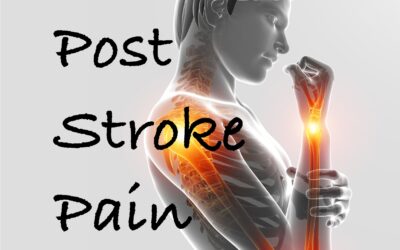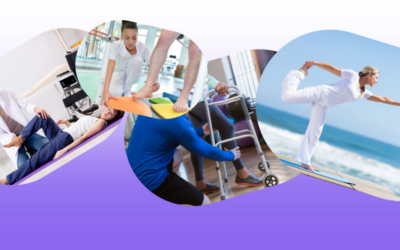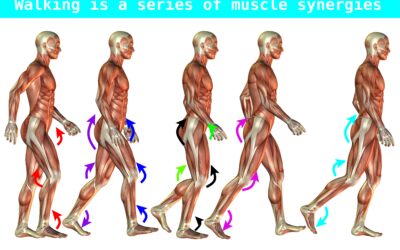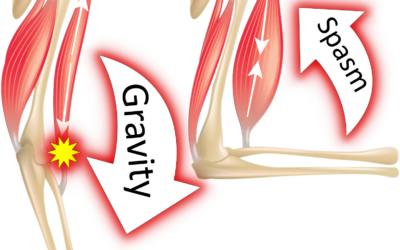Why Forcing It Doesn’t Work
How to Stop Reinforcing the Wrong Patterns and Start Rewiring Your Brain for Real Recovery
If you’ve had a stroke (or other neurologic injury), and your hand feels like it’s stuck in a fist or your arm just hangs like dead weight, you are not alone.
And here’s the twist… it isn’t always just “brain damage” or “nerve damage” that’s to blame, even though that’s the common assumption.
In this blog, I’m going to break down the 3 most common mistakes that interfere with hand and arm recovery after stroke.
Better yet? I’ll give you real-world, practical steps you can start today to get your recovery back on track.
Mistake #1: Focusing Too Much on Movement, Not Enough on Activation
I see it all the time. A client comes in frustrated and shows me how every time they try to open their hand, it clenches tighter. The harder they “try,” the worse it gets.
Here’s the reality: after stroke, your brain has to rebuild motor circuits that used to work automatically. Grabbing a cup. Reaching for a pen. Opening your hand. You never had to “think” about it before. Now, you do.
The problem? Many people try to force the whole movement instead of isolating the smaller pieces.
And when that happens, the brain finds shortcuts—compensatory strategies like momentum, or even triggering spasticity (that involuntary gripping most of you know all too well).
![]() The more you reinforce those bad habits, the more the brain defaults to them.
The more you reinforce those bad habits, the more the brain defaults to them.
The solution: zoom in.
You have to train the brain to activate the right muscles at the right time:
- Focus on opening: Look at your hand. Think “open… open… open.”
- Mentally rehearse: Close your eyes. Picture the fingers relaxing and then opening.
- Add sensory input: Tap the back of the arm, use vibration, or a massage gun to “remind” the brain that the hand exists.
- Use passive motion (with or without a therapist) to gently stretch the fingers open while focusing attention on the movement.

This is micro-activation work. It looks small, but it’s powerful.
You can’t rebuild a circuit by just throwing the whole switch.
You have to reconnect wire by wire.
Mistake #2: Repeating the Wrong Movement Over and Over
The second trap? Repeating a movement pattern that looks good but isn’t actually “real.”
I see this a lot in people working on lifting the arm.
They’ll show me: “Look, I can lift my arm!”
But when I look closer, I see it’s actually:
- Shoulder hiking
- Leaning to the side
- The elbow flaring out
All classic signs of compensatory patterns or abnormal synergy patterns.
![]() You’re reinforcing the wrong “function code” in your brain.
You’re reinforcing the wrong “function code” in your brain.
(Think of it like your computer running the wrong software every time you click.)
The fix? Break it down.
- Go smaller: Isolate the joint you want to move.
- Assist the movement: Active-assist is NOT cheating! Help the arm through the motion so your brain doesn’t default to bad habits.
- Watch for signs: If the elbow flares, STOP. Reset and try again with less range.
- Stabilize: If you’re working on shoulder movement, lay down. Stabilize the body so there’s no compensation.
If you’re working on hand movement, rest the arm on a table with the hand hanging off.
![]() Pro tip: I always say work on shoulder and elbow stability first. It makes hand work easier later.
Pro tip: I always say work on shoulder and elbow stability first. It makes hand work easier later.
The hand might be the ultimate goal, but you can’t skip the foundation.
Mistake #3: Not Practicing Daily
This is the biggest one.
Neuroplasticity (rewiring the brain) requires one thing above all: consistency.
I get it. Recovery can be exhausting. It’s easy to skip a day… and then another… and then the gains start to disappear.
I experienced this firsthand learning Japanese. I stopped practicing for just 2 weeks and forgot words that felt automatic before.
Same with rehab. Motor recovery works the same way as language learning.
![]() Daily practice wins. Every. Single. Time.
Daily practice wins. Every. Single. Time.
My advice? Keep it simple.
- 2 to 5 minutes a day. That’s it.
- Tie it to a habit. After every meal, pull out a basket with your tools and do a few micro-movements.
- Keep expectations low. Focus on ONE micro movement for a few minutes. Example: shoulder flexion only.
Consistency > intensity.
Little effort, every day, for a long period of time.
That’s how you unlock your brain’s ability to adapt.
Final Thought
I hope this gave you hope.
If you feel stuck, chances are you’ve accidentally fallen into one (or more) of these traps. The good news? They’re fixable.
![]() Progress is possible no matter how long it’s been since your stroke.
Progress is possible no matter how long it’s been since your stroke.![]() Don’t let anyone tell you “18 months” is the limit. The research doesn’t support that. My clinical experience doesn’t support that.
Don’t let anyone tell you “18 months” is the limit. The research doesn’t support that. My clinical experience doesn’t support that.
You can get back on track. You can get results again.
Start small. Stay consistent. Be patient.
I believe in you.
Articles you may be interested in
Post Stroke Pain: Diagnosis and Treatment
Pain is a common symptom after a stroke. Unfortunately, pain can be a significant barrier to regaining function. In some cases, there is an identifiable cause related to a movement or a structural problem. The rehab team can identify this, prescribe the...
Brunnstrom Stages of Motor Recovery
The Brunnstrom stages of stroke recovery is one proposed model of how someone with hemiplegia will recover movement. It was developed by a physical therapist in the 1960s and proposes that this sequence of recovery falls into six loosely defined stages. The main...
What is a muscle synergy?
In the world of neurologic movement disorders, we talk a lot about "abnormal synergy patterns". And they kind of "get a bad rap" in how they can inhibit motor (movement) recovery. But functional muscle synergies are not necessarily a bad thing. Here we are going to...
What is spasticity?
Spasticity is an involuntary muscle contraction caused by a hyperexcitability of the reflex arc that occurs due to damage to the brain or the spinal cord. Huh?? Yeah, agreed. Ok, I get it, keep it simple. Did you ever wonder why your leg seems to spaz out for no...
Mental Practice Helps Movement Recovery after a Stroke
Mental practice is a way of relearning movement (motor functions) by creating an image in your mind of the body performing that movement without the body actually moving. This method of enhancing performance and/or improving a motor skill has been used for decades in...










